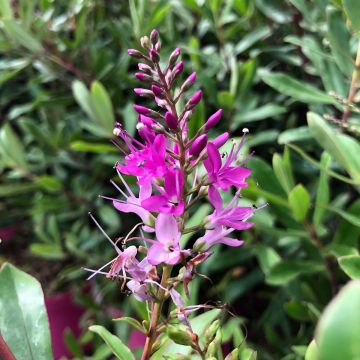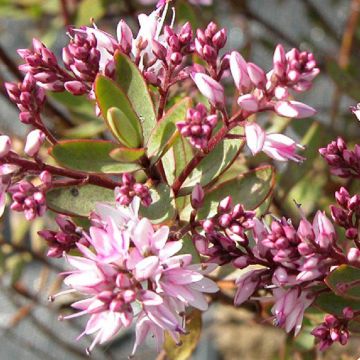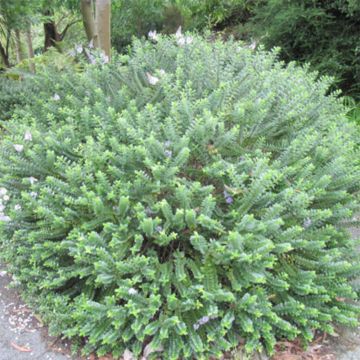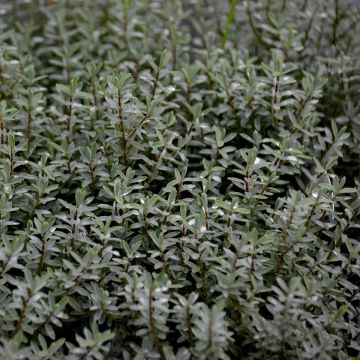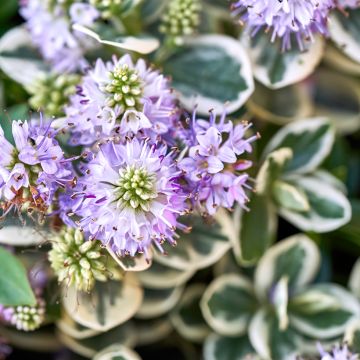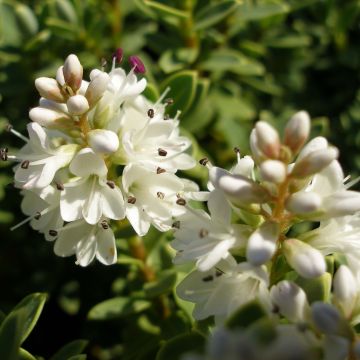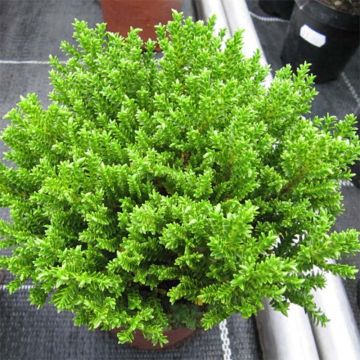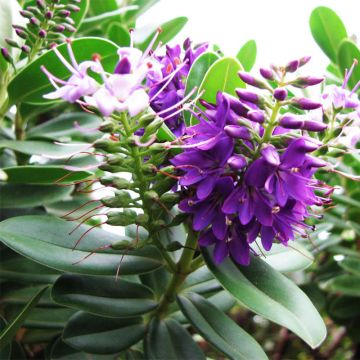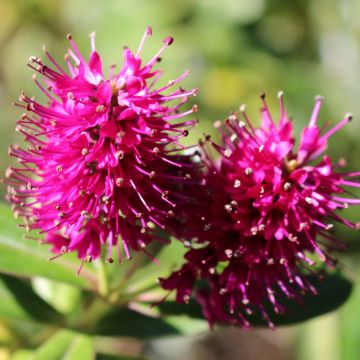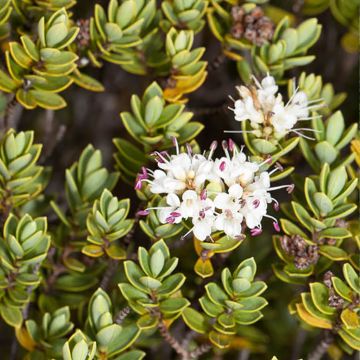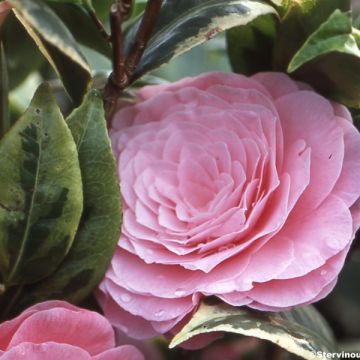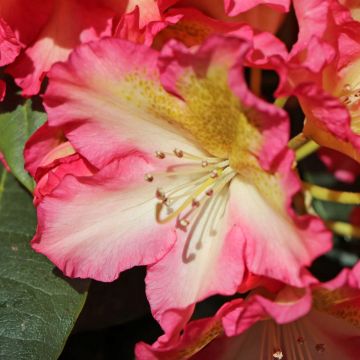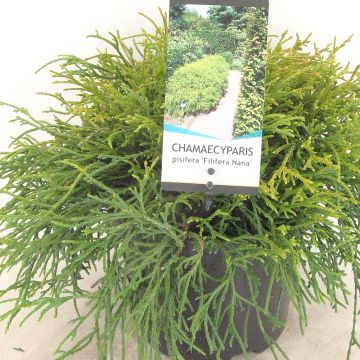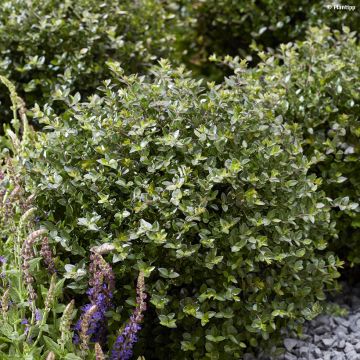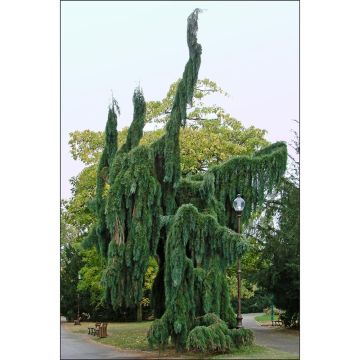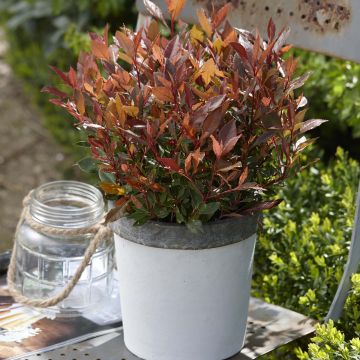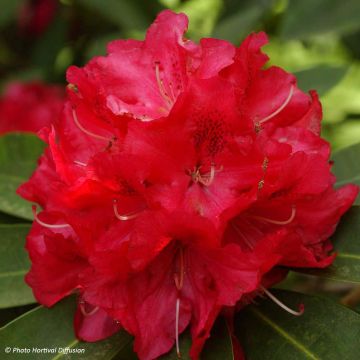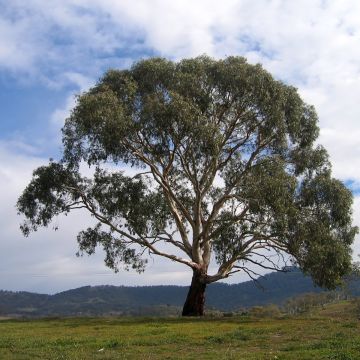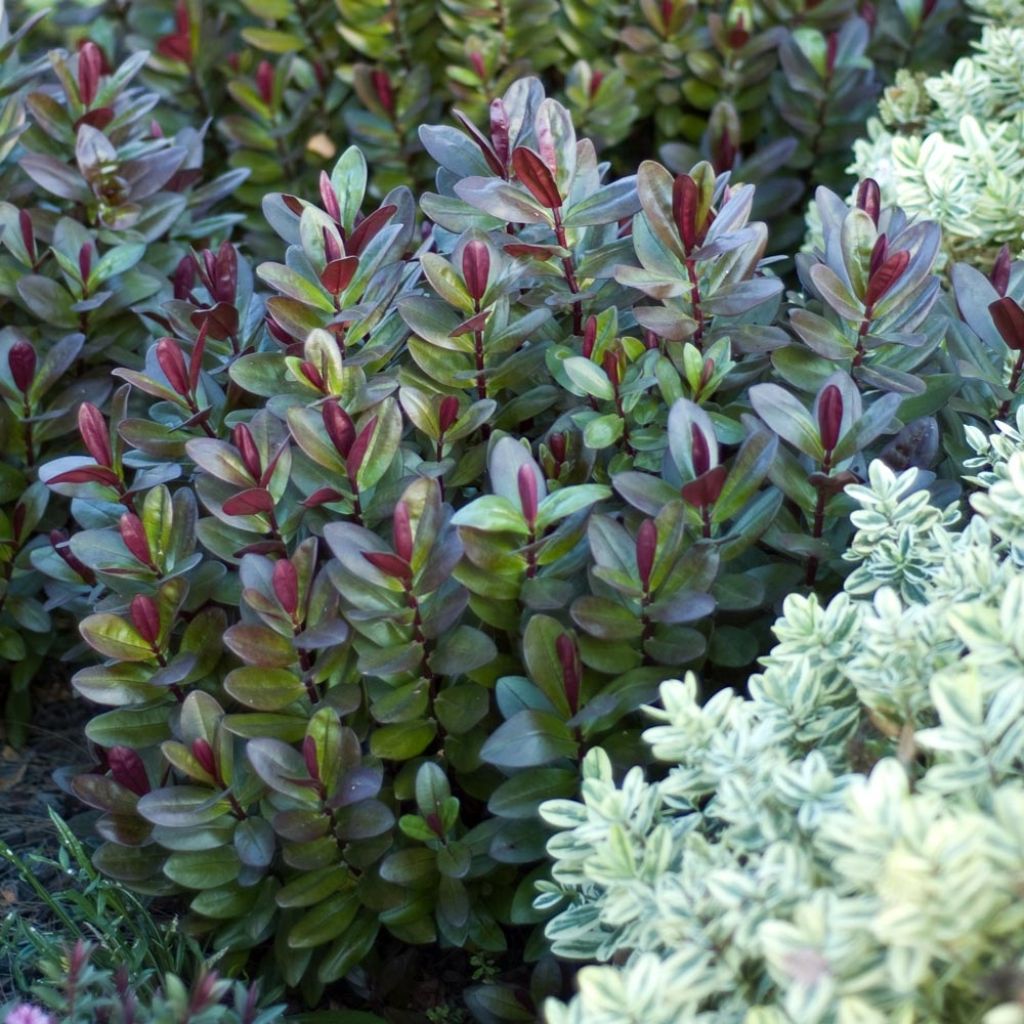

Hebe Santa Monica
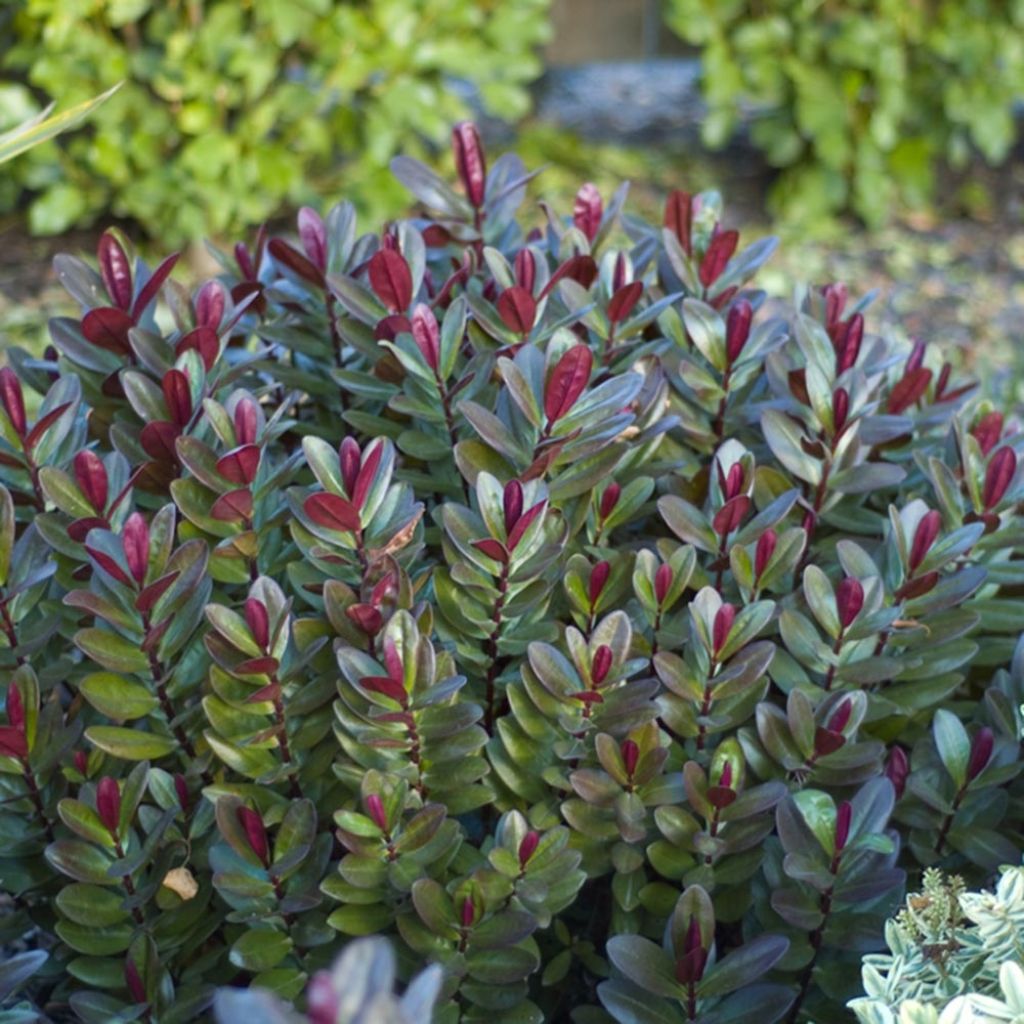

Hebe Santa Monica
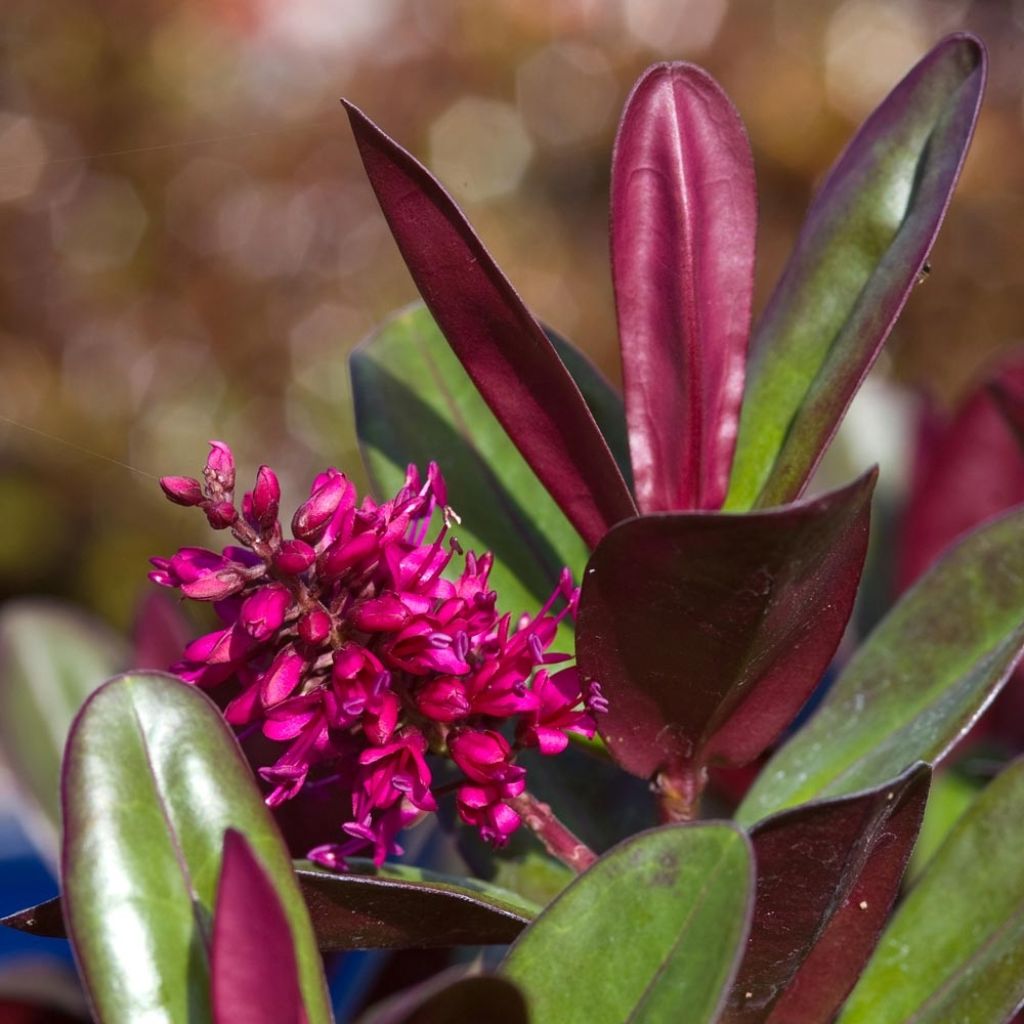

Hebe Santa Monica
Hebe Santa Monica
Hebe Santa Monica®
Shrubby Veronica, Speedwell shrub
This plant carries a 24 months recovery warranty
More information
We guarantee the quality of our plants for a full growing cycle, and will replace at our expense any plant that fails to recover under normal climatic and planting conditions.
From €5.90 for pickup delivery and €6.90 for home delivery
Express home delivery from €8.90.
Delivery to Corse prohibited: UE law prohibits the import of this plant from mainland France to Corse as part of the fight against Xylella fastidiosa. Please accept our sincere apologies.
More information
Does this plant fit my garden?
Set up your Plantfit profile →
Description
'Santa Monica'® is a brand new variety of hybrid Speedwell shrub that stands out for its particularly dark foliage in winter. This small plant, which has a compact habit, is adorned with small glossy leaves that change colour from green in spring and summer to autumnal red and then almost black in cold weather. The charm of this perennial, with its large cushion-like appearance, is further enhanced by its prolonged raspberry pink flowering, which occurs from late spring to mid-summer. Moderately hardy, but drought resistant, this shrubby Hebe is easy to grow in well-drained soil in sun or partial shade. Its compact size makes it perfect for containers on terraces, in summer compositions, or in mass plantings in mild climates.
'Santa Monica'® is a recent hybrid cultivar, and likely the one with the darkest winter foliage. It belongs to the Plantaginaceae family and is related to perennial veronicas. It eventually forms a small bush with a slightly open habit, reaching approximately 80 cm (1 ft) in height and 60 cm (24 in) in width. Its reddish to purplish stems, which lignify with age, bear thin elliptical leaves, about 5 cm (2 in) long, that are thick and leathery. They start off a bright green when they emerge and gradually change to bronze and purplish hues at the first signs of cold, ending the year in a nearly black shade, including on the underside. Flowering begins in May-June and ends in July-August. It takes the form of simple lateral inflorescences resembling thin bottlebrushes, about 5 cm (2 in) long. They consist of numerous small fluffy flowers: the fuchsia pink buds open into vibrant raspberry pink blooms. Pruning after flowering is recommended to maintain a compact habit and neat appearance to this shrubby veronica.
With relatively slow growth and being relatively hardy (down to -10°C (14 °F) for 'Santa Monica'), Hebes are generally grouped with perennial plants because their usage is closer to that of perennials than to shrubs. The medium-sized variety 'Santa Monica' can be showcased in a pretty pot on the terrace, in a large flower box with annuals (lobelias, nemesias, Euphorbia Diamond Frost), or in a bed of small shrubs or tall perennials. To enhance its beauty consider combining with e.g. Pennisetum advena Rubrum (a tall grass with purple foliage), blue perennial geraniums (Rozanne, Rosemoor), or the Senecio Angel Wings with its almost white foliage. In colder regions Hebes can be grown in large pots on the terrace and stored in a bright, unheated space during winter.
Report an error about the product description
Hebe Santa Monica in pictures
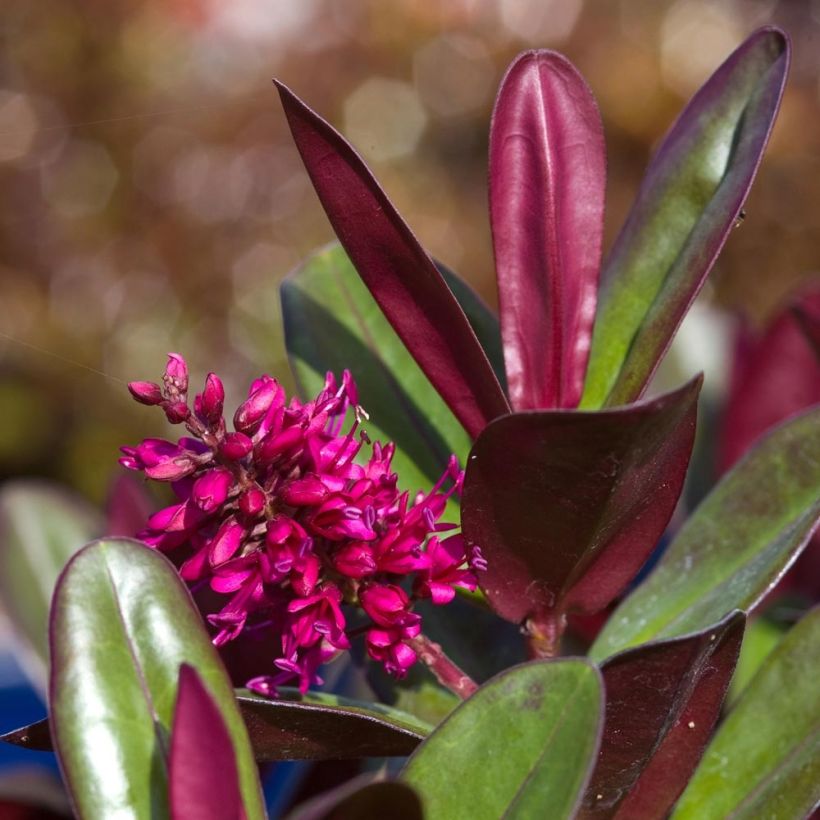

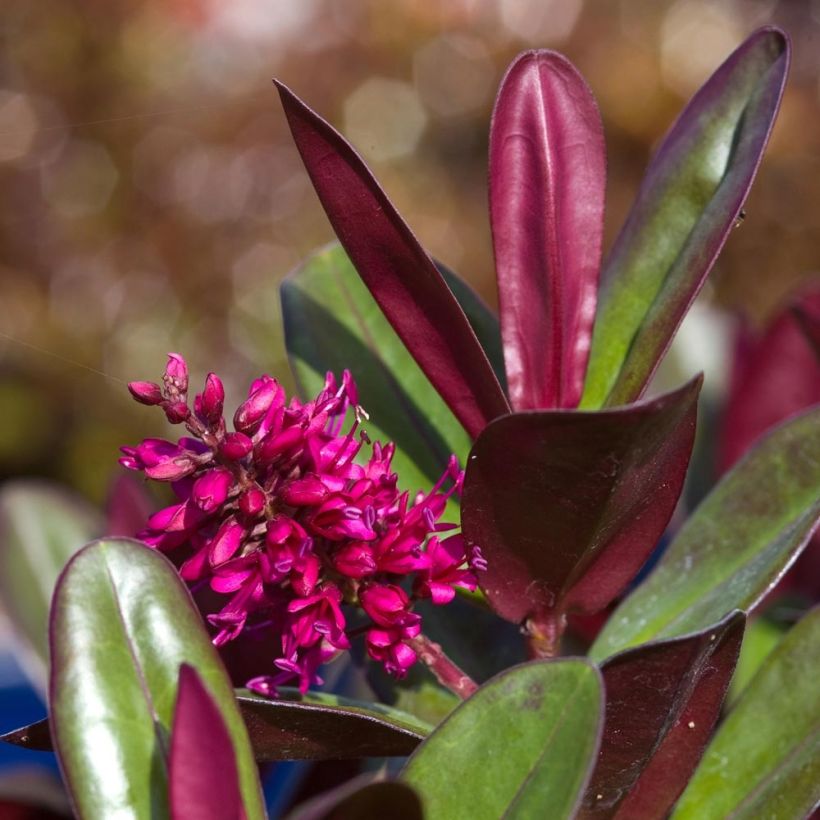

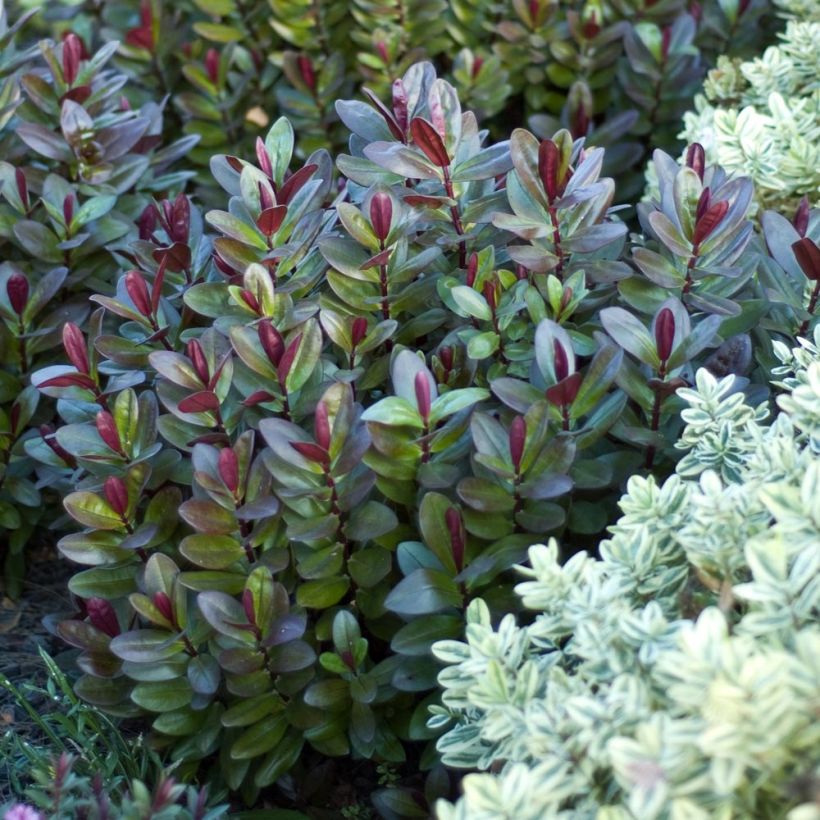

Plant habit
Flowering
Foliage
Botanical data
Hebe
Santa Monica®
Scrophulariaceae
Shrubby Veronica, Speedwell shrub
Cultivar or hybrid
Other Hebe - Shrubby Veronica
Planting and care
Hebe 'Santa Monica' is preferably planted in spring in a cool climate, or in October in warmer regions. It prefers a sunny site and well-drained, even sandy soil that is sufficiently deep and well loosened, remaining slightly moist during the growth and flowering periods. This plant tolerates sea spray and slightly dry soils in summer once it is well established. From their origins, Hebes have retained a certain sensitivity to extreme cold, especially if frost occurs while the soil is damp. In regions that are cold and/or rainy in winter, which regularly experience frosts down to -8/-10°C (17.6 to 14 °F), it is necessary to protect them or cultivate them in pots, bringing them indoors during freezing periods. As they grow, pruning with hedge shears can be useful to maintain a dense and compact habit and a neat appearance.
Planting period
Intended location
Care
This item has not been reviewed yet - be the first to leave a review about it.
Evergreen shrubs
Haven't found what you were looking for?
Hardiness is the lowest winter temperature a plant can endure without suffering serious damage or even dying. However, hardiness is affected by location (a sheltered area, such as a patio), protection (winter cover) and soil type (hardiness is improved by well-drained soil).

Photo Sharing Terms & Conditions
In order to encourage gardeners to interact and share their experiences, Promesse de fleurs offers various media enabling content to be uploaded onto its Site - in particular via the ‘Photo sharing’ module.
The User agrees to refrain from:
- Posting any content that is illegal, prejudicial, insulting, racist, inciteful to hatred, revisionist, contrary to public decency, that infringes on privacy or on the privacy rights of third parties, in particular the publicity rights of persons and goods, intellectual property rights, or the right to privacy.
- Submitting content on behalf of a third party;
- Impersonate the identity of a third party and/or publish any personal information about a third party;
In general, the User undertakes to refrain from any unethical behaviour.
All Content (in particular text, comments, files, images, photos, videos, creative works, etc.), which may be subject to property or intellectual property rights, image or other private rights, shall remain the property of the User, subject to the limited rights granted by the terms of the licence granted by Promesse de fleurs as stated below. Users are at liberty to publish or not to publish such Content on the Site, notably via the ‘Photo Sharing’ facility, and accept that this Content shall be made public and freely accessible, notably on the Internet.
Users further acknowledge, undertake to have ,and guarantee that they hold all necessary rights and permissions to publish such material on the Site, in particular with regard to the legislation in force pertaining to any privacy, property, intellectual property, image, or contractual rights, or rights of any other nature. By publishing such Content on the Site, Users acknowledge accepting full liability as publishers of the Content within the meaning of the law, and grant Promesse de fleurs, free of charge, an inclusive, worldwide licence for the said Content for the entire duration of its publication, including all reproduction, representation, up/downloading, displaying, performing, transmission, and storage rights.
Users also grant permission for their name to be linked to the Content and accept that this link may not always be made available.
By engaging in posting material, Users consent to their Content becoming automatically accessible on the Internet, in particular on other sites and/or blogs and/or web pages of the Promesse de fleurs site, including in particular social pages and the Promesse de fleurs catalogue.
Users may secure the removal of entrusted content free of charge by issuing a simple request via our contact form.
The flowering period indicated on our website applies to countries and regions located in USDA zone 8 (France, the United Kingdom, Ireland, the Netherlands, etc.)
It will vary according to where you live:
- In zones 9 to 10 (Italy, Spain, Greece, etc.), flowering will occur about 2 to 4 weeks earlier.
- In zones 6 to 7 (Germany, Poland, Slovenia, and lower mountainous regions), flowering will be delayed by 2 to 3 weeks.
- In zone 5 (Central Europe, Scandinavia), blooming will be delayed by 3 to 5 weeks.
In temperate climates, pruning of spring-flowering shrubs (forsythia, spireas, etc.) should be done just after flowering.
Pruning of summer-flowering shrubs (Indian Lilac, Perovskia, etc.) can be done in winter or spring.
In cold regions as well as with frost-sensitive plants, avoid pruning too early when severe frosts may still occur.
The planting period indicated on our website applies to countries and regions located in USDA zone 8 (France, United Kingdom, Ireland, Netherlands).
It will vary according to where you live:
- In Mediterranean zones (Marseille, Madrid, Milan, etc.), autumn and winter are the best planting periods.
- In continental zones (Strasbourg, Munich, Vienna, etc.), delay planting by 2 to 3 weeks in spring and bring it forward by 2 to 4 weeks in autumn.
- In mountainous regions (the Alps, Pyrenees, Carpathians, etc.), it is best to plant in late spring (May-June) or late summer (August-September).
The harvesting period indicated on our website applies to countries and regions in USDA zone 8 (France, England, Ireland, the Netherlands).
In colder areas (Scandinavia, Poland, Austria...) fruit and vegetable harvests are likely to be delayed by 3-4 weeks.
In warmer areas (Italy, Spain, Greece, etc.), harvesting will probably take place earlier, depending on weather conditions.
The sowing periods indicated on our website apply to countries and regions within USDA Zone 8 (France, UK, Ireland, Netherlands).
In colder areas (Scandinavia, Poland, Austria...), delay any outdoor sowing by 3-4 weeks, or sow under glass.
In warmer climes (Italy, Spain, Greece, etc.), bring outdoor sowing forward by a few weeks.

































